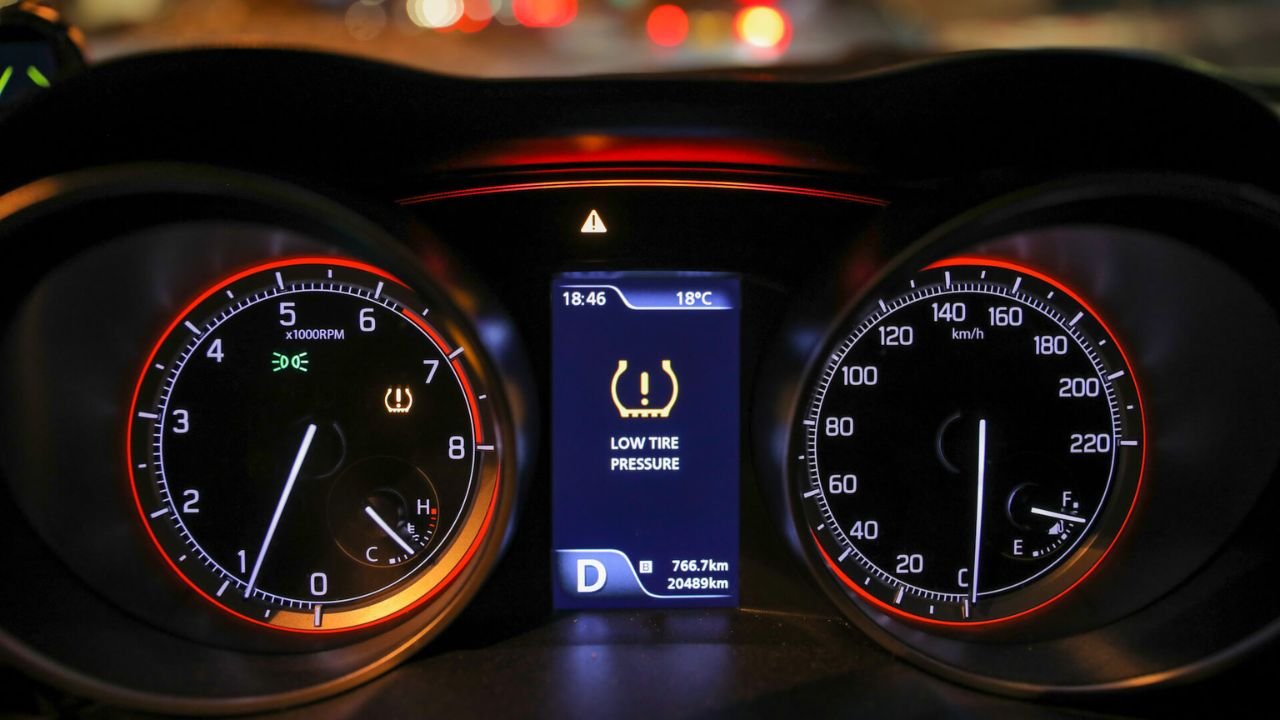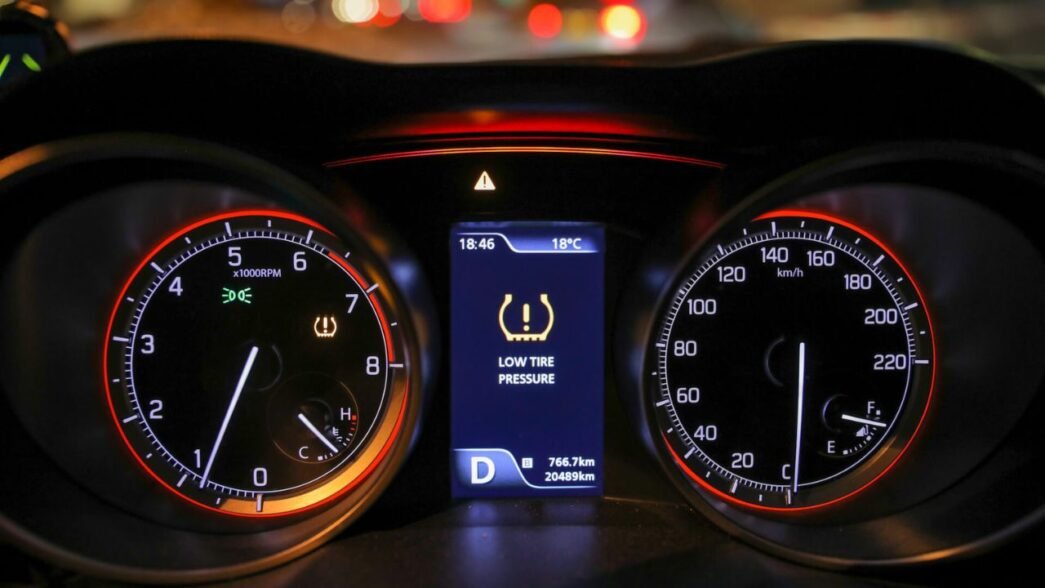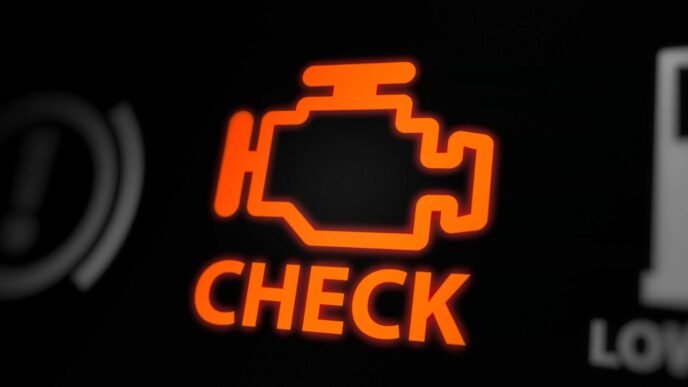Why is my tire pressure light blinking? This question captures the immediate worry of drivers noticing that blinking light on their dashboard. It’s more than just a random flicker—it’s a critical warning from your Tire Pressure Monitoring System (TPMS) signaling a potential issue with your vehicle’s safety. Understanding the root causes behind this blinking light can help you take control and ensure safe driving conditions. Let’s dive into the reasons behind that blinking tire pressure light and learn how to address and prevent these issues effectively.
Why is My Tire Pressure Light Blinking? Mean?
When your tire pressure light starts blinking, it’s not just a random occurrence on your dashboard; it’s a potential warning sign that shouldn’t be ignored. Let’s dive into what the blinking tire pressure light indicates and why it demands your attention.
Understanding the TPMS: Provide a brief overview
The Tire Pressure Monitoring System (TPMS) plays a critical role in maintaining your vehicle’s safety by monitoring the air pressure in your tires. This system consists of sensors located in each tire, which transmit data to the onboard computer. The TPMS constantly checks the tire pressure and alerts you if it detects any deviations from the recommended levels. When the pressure falls below a certain threshold, the TPMS triggers the tire pressure light on your dashboard to notify you of the issue promptly.
Solid vs. Blinking Light: Key Differences
Understanding the difference between a solid and a blinking tire pressure light is essential for your vehicle maintenance awareness. A solid light usually indicates low tire pressure, alerting you to inflate the affected tire. On the other hand, a blinking light signals a malfunction within the TPMS system itself. This could result from sensor damage, battery depletion, or other technical faults. It’s crucial to differentiate between the two signals as a solid light prompts tire pressure adjustment, while a blinking light necessitates system inspection and potential repairs.
For more in-depth information on how the TPMS works and its significance in ensuring safe driving, you can explore WHAT IS TPMS & HOW DOES IT WORK? and dive deeper into the functionalities of this vital system. Additionally, learn more about the Tire Pressure Monitoring System (TPMS) and how it contributes to vehicle safety by visiting Tirethe Pressure Monitoring System (TPMS). Understanding the technical aspects and the operational dynamics of the TPMS will empower you with the knowledge needed to address tire pressure concerns effectively.
Common Causes of a Blinking Tire Pressure Light
When your tire pressure light starts blinking, it’s a clear indication that something demands your prompt attention. Understanding the common causes behind a blinking tire pressure light can help you address the issue effectively and ensure your vehicle’s optimal performance. Let’s delve into the key reasons why your tire pressure light may blink unexpectedly:
TPMS Sensor Failure:
One of the primary causes of a blinking tire pressure light is a malfunctioning TPMS sensor. These sensors, installed in each tire, play a vital role in monitoring tire pressure and transmitting data to your vehicle’s computer system. When a sensor fails or malfunctions, it disrupts the communication between the sensor and the vehicle’s computer, triggering the blinking light. This communication breakdown can lead to inaccurate pressure readings and compromise your vehicle’s safety. Understanding the intricate connection between TPMS sensors and the onboard computer is essential for diagnosing and resolving sensor-related issues promptly.
Battery Issues in TPMS Sensors:
TPMS sensors rely on batteries for power to function effectively. If a sensor’s battery is dead or weak, it can cause the TPMS sensor to malfunction, resulting in a blinking tire pressure light. A depleted battery hinders the sensor’s ability to transmit accurate tire pressure data to the vehicle’s computer, leading to erroneous warnings and potential safety risks. Being aware of the significance of battery health in TPMS sensors can help you troubleshoot blinking light issues and ensure proper maintenance of these crucial components.
Interference and Signal Issues:
Signal interference or weak signals can also contribute to a blinking tire pressure light. External factors such as electromagnetic interference or signal disruptions from nearby devices can affect the TPMS system’s performance, causing the light to blink intermittently. Unstable signal transmission between the TPMS sensors and the vehicle’s computer can lead to discrepancies in tire pressure readings and trigger false alerts. Understanding signal dynamics and potential sources of interference is essential for identifying and addressing signal-related issues to restore the TPMS system’s functionality.
For further insights on addressing signal interference and resolving TPMS-related concerns, you can explore resources like What Should You Do when a tire pressure light flashes which provide practical tips for managing signal disruptions and maintaining optimal TPMS performance. Stay informed on the common causes of a blinking tire pressure light to proactively tackle TPMS issues and ensure a safe driving experience.

Steps to Take When Your Tire Pressure Light Blinks
When your tire pressure light starts blinking, it’s crucial to take immediate action to ensure your safety on the road. Ignoring the blinking light can lead to potential risks and compromise the performance of your vehicle. Here are the essential steps to follow when faced with a blinking tire pressure light:
Check Tire Pressure Manually
To address the blinking tire pressure light, the first step is to manually check your tire pressure using a reliable gauge. Ensuring that your tires are not underinflated is vital for safe driving and optimal vehicle performance. By confirming the pressure levels in all tires, you can identify any discrepancies that might be triggering the blinking light.
Inspect for Visible Damage
After checking the tire pressure, inspect your tires for any visible damage or punctures that could be causing issues. Inspecting the tread and sidewalls for cuts, bulges, or any signs of wear and tear can help pinpoint potential reasons for the blinking light. Addressing visible damage promptly can prevent further complications and guarantee your safety on the road.
Seek Professional Help
If the blinking tire pressure light persists after manual checks and inspections, it’s recommended to seek assistance from a professional mechanic or tire specialist. Visiting a trained professional ensures accurate diagnosis and effective resolution of TPMS issues. Professional expertise can identify underlying problems within the TPMS system and provide necessary repairs or replacements to restore optimal functionality.
For more detailed guidance on dealing with a blinking tire pressure light and ensuring your vehicle’s safety, you can refer to resources like Flashing vs. Solid TPMS Light: What It Means & What to Do for additional insights. Understanding the proactive steps to take when confronted with a blinking tire pressure light empowers you to address the issue promptly and maintain safe driving conditions.
Preventive Measures to Avoid TPMS Issues
Ensuring the longevity and reliability of your Tire Pressure Monitoring System (TPMS) requires proactive preventive measures. By adopting a preventive maintenance approach, you can mitigate potential TPMS issues and maintain optimal tire performance. Let’s explore important strategies to prevent TPMS issues and safeguard your driving experience.
Regular Maintenance Checks
Regular maintenance checks are the cornerstone of effective TPMS management. Incorporating TPMS checks into your routine vehicle servicing is essential to monitor tire pressure levels accurately. By scheduling regular inspections and maintenance sessions, you can proactively identify any discrepancies in tire pressure and address potential issues before they escalate. Maintaining a proactive stance towards TPMS maintenance enhances vehicle safety and extends the lifespan of your TPMS sensors.
For more insights on preventing TPMS sensor damage and optimizing sensor performance, you can refer to resources such as Preventing TPMS Sensor Damage. Implementing best practices in TPMS sensor care and maintenance can significantly reduce the risk of sensor malfunctions and ensure the seamless operation of your TPMS system.
Replacing TPMS Sensors
Understanding the expected lifespan of TPMS sensors is crucial for timely replacements and system reliability. TPMS sensors typically have a lifespan of 5 to 10 years, depending on usage and environmental conditions. As sensors age, their accuracy and functionality may deteriorate, leading to inaccurate pressure readings and system malfunctions. It’s important to monitor the performance of your TPMS sensors and consider replacing them when necessary to maintain the integrity of the system.
To explore common TPMS problems and solutions related to sensor replacements, you can delve into resources like Top 3 TPMS Problems and How to Solve Them. Understanding the signs that indicate sensor failure and the importance of timely replacements can help you address TPMS issues proactively and ensure consistent system performance.
Keeping Tires Properly Inflated
Maintaining proper tire pressure according to the manufacturer’s recommendations is paramount for preventing TPMS alerts and system malfunctions. Adequate tire inflation not only improves fuel efficiency and tire longevity but also reduces the risk of triggering the TPMS light unnecessarily. By adhering to the recommended tire pressure levels specified in your vehicle’s manual, you can minimize the occurrence of false alerts and ensure the accurate operation of your TPMS system.
For comprehensive guidance on resolving TPMS issues and optimizing tire pressure management, you can access informative resources such as Tire Pressure Monitor Fault: How to Resolve and Prevent Issues. Implementing proper tire inflation practices and monitoring pressure levels regularly can enhance the performance of your TPMS system and contribute to a safer driving environment.
Frequently Asked Questions
Have you ever wondered why your tire pressure light blinks out of the blue? Understanding the reasons behind this mysterious blinking light is crucial for maintaining your vehicle’s safety and performance. Let’s delve into some common questions that drivers often have about the tire pressure light flashing:
1. What does it mean when the tire pressure light blinks intermittently?
When your tire pressure light blinks intermittently, it indicates a potential issue with the Tire Pressure Monitoring System (TPMS) itself. This blinking pattern usually signals a malfunction within the TPMS system, such as sensor damage or signal disruptions. It’s essential to address this blinking light promptly to ensure accurate tire pressure monitoring and vehicle safety.
2. Why does the TPMS light flash and then stay on?
If the TPMS light flashes briefly and then remains solid, it signifies a fault within the TPMS system. This prolonged activation of the light indicates a persistent issue with the tire pressure sensors or the system’s communication. Ignoring this signal can lead to inaccurate pressure readings and compromise your driving experience. Understanding the significance of this pattern can help you take the necessary steps to diagnose and resolve the problem.
3. How can I differentiate between a solid and a blinking tire pressure light?
Distinguishing between a solid and a blinking tire pressure light is essential for prompt troubleshooting. A solid light typically indicates low tire pressure in one or more tires, prompting you to inflate them to the recommended levels. On the other hand, a blinking light suggests a malfunction within the TPMS system itself. By recognizing this distinction, you can take appropriate measures to address the specific issue causing the blinking light.
4. What are the common causes of a blinking tire pressure light?
Several factors can trigger a blinking tire pressure light, including TPMS sensor failure, battery issues in the sensors, and signal interference. Understanding these common causes can help you identify the source of the problem and take corrective actions to restore the functionality of the TPMS system. Addressing these underlying issues proactively is essential for ensuring accurate tire pressure monitoring and safe driving.
5. How should I respond when the tire pressure light starts blinking?
When confronted with a blinking tire pressure light, it’s vital to respond promptly to safeguard your vehicle’s performance and safety. Checking the tire pressure manually, inspecting for visible damage, and seeking professional help are crucial steps to address the blinking light effectively. By taking these proactive measures, you can ensure that your TPMS system functions optimally and maintains a secure driving environment.
For additional insights on resolving TPMS issues and interpreting blinking tire pressure lights, you can explore resources like What should you do when a tire pressure light flashes to gain a deeper understanding of common TPMS-related concerns. Stay informed and empowered to tackle blinking tire pressure lights with confidence and proactive maintenance strategies.
Read More: Why Is My Left Ear Fluttering and How to Stop It?

Top 5 Amazon Products to Ensure Your Tires and TPMS Stay in Optimal Condition
- AstroAI Digital Tire Pressure Gauge – Accurate and easy-to-use tool for manually checking tire pressure.
- VONDERSO TPMS Sensor Kit – High-quality replacement sensors to solve TPMS sensor failure issues.
- TireTek Premium Tire Air Compressor – Reliable air compressor to maintain proper tire inflation.
- Slime Tire Repair Kit – Comprehensive repair kit for fixing punctures and preventing TPMS alerts.
- OTUAYAUTO TPMS Relearn Tool – Essential tool for resetting and recalibrating your vehicle’s TPMS system.
Conclusion – Why is My Tire Pressure Light Blinking?
The mystery behind your blinking tire pressure light is not just a minor concern; it’s a signal of your vehicle’s well-being. Understanding why the tire pressure light blinks empowers you to take the right steps for your safety. From distinguishing between solid and blinking lights to addressing sensor failures and signal issues, each insight is crucial in maintaining your vehicle’s optimal performance. Remember, prompt action and preventive measures are key to a safe driving experience. Stay informed, stay proactive, and drive with confidence knowing you’re in control of your vehicle’s well-being.












